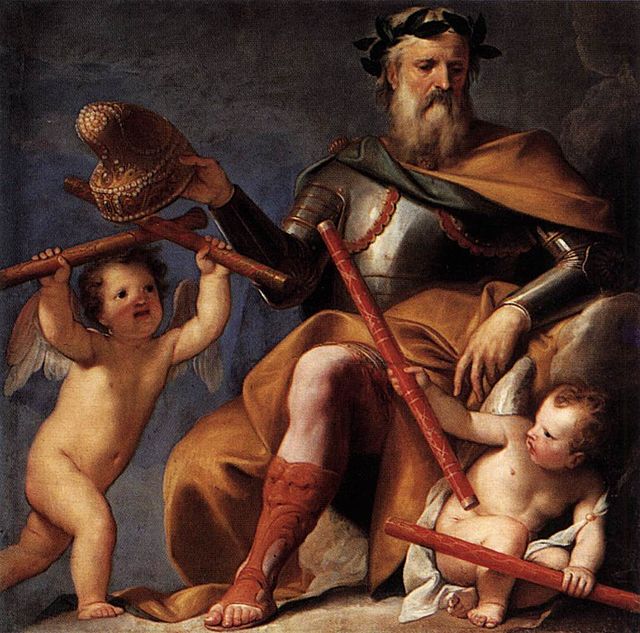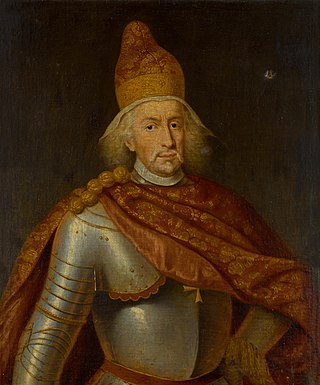Top Qs
Timeline
Chat
Perspective
Francesco Morosini
Doge of Venice from 1688 to 1694 From Wikipedia, the free encyclopedia
Remove ads
Francesco Morosini (26 February 1619 – 16 January 1694) was the Doge of Venice from 1688 to 1694, at the height of the Great Turkish War. He was one of the many doges and generals produced by the Venetian noble Morosini family.[1]
Remove ads
Early career

Morosini first rose to prominence as Captain-General of the Venetian forces on Crete during the siege of Candia by the Ottoman Empire. He was eventually forced to surrender the city, and was accused of cowardice and treason on his return to Venice; however, he was acquitted after a brief trial.[1]
In 1685, at the outbreak of the Morean War, Morosini took command of a fleet against the Ottomans. Over the next several years, he captured the Morea with the help of Otto Wilhelm Königsmarck, as well as Lefkada and parts of western Greece. He also briefly captured Athens but was unable to hold it, and attempted a failed siege of the former Venetian fortress of Negroponte. His fame reached such heights that he was given the victory title Peloponnesiacus, and was the first Venetian citizen to have a bronze bust placed during his own lifetime in the Great Hall, with the inscription Francisco Morosini Peloponnesiaco, adhuc viventi, Senatus.[2]
Remove ads
Destruction of the Parthenon and loot of sculptures from Athens
During the Morean War, the Parthenon was used as a gunpowder magazine by the Ottoman Army. On September 26, 1687, a mortar during the Venetian bombardment of Athens scored a direct hit on the edifice, igniting the stored powder—the subsequent explosion of which caused the greatest destruction in the Parthenon's history.[3] An attaché of the Swedish field commander General Otto Wilhelm Königsmarck wrote later: "How it dismayed His Excellency to destroy the beautiful temple which had existed three thousand years!" By contrast Morosini, who was the commander in chief of the operation, described it in his report to the Venetian government as a "fortunate shot".
When he conquered the Acropolis in early 1688, Morosini attempted to loot Athena's and Poseidon's horses and chariots from the western pediment of the Parthenon, but the sculptures fell on the ground and smashed.[4][5] This was the first documented attempt to remove sculptures from the pediments.[6] The Ottoman Empire regained possession of the monument in the following year.[7]
Morosini also took the Piraeus Lion as a war trophy to the Venetian Arsenal.
Remove ads
Doge
In the summer of 1688, Morosini, now having been proclaimed Doge of Venice, attacked Negropont but was unable to capture it and was forced to return to Venice when plague broke out among his troops. He embarked on a final campaign in 1693, but was again unsuccessful in taking Negropont, and returned to Venice after sacking some minor coastal towns. After his death in 1694, a large marble arch was placed in his honor at the Doge's Palace. Nini, the cat of which Morosini was notably fond, was embalmed along with a mouse between her paws. Nini and the mouse are current exhibits at the Museo Correr in Venice.[8]
Commemoration

- The Scuola Navale Militare Francesco Morosini is named for him.
- The Ruggiero di Lauria-class ironclad Francesco Morosini, launched on 30 July 1885, completed in 1889, and stricken in 1909, was named for him.
- The Francesco Caracciolo-class battleship Francesco Morosini, laid down in 1915 but scrapped in 1921 prior to launching, was named for him.
Remove ads
See also
References
Wikiwand - on
Seamless Wikipedia browsing. On steroids.
Remove ads

